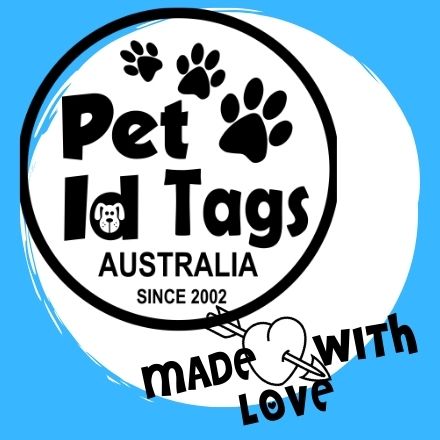Overview
A dog tag is crucial for pet safety in Australia, providing identification and contact information to help reunite lost pets with their owners. Essential details to include are your dog's name, your contact info, and possibly microchip information. Avoid including personal details like your full name or exact address. Choose durable materials and ensure legibility for the tag. Regularly check and update the tag information, and consider additional safety measures like microchipping and GPS trackers for enhanced security.
Frequently Asked Questions
1. Why are dog tags important for pets?
2. What essential information should be included on a dog tag?
3. What should not be included on a dog's tag?
4. What materials are best for dog tags in Australia?
5. How often should I check and maintain my dog's tag?
When it comes to keeping your furry friend safe, a dog tag is an essential accessory. In Australia, where pet ownership is a cherished part of life, having the right information on your dog's tag can make all the difference. Let's explore what you should include on a dog tag to ensure your four-legged friend returns home safely.
Why Dog Tags are Important
Dog tags serve a vital purpose in pet safety. They provide essential information that can help reunite you with your pet if they wander off or get lost. In Australia, where pets are often taken on adventures to parks, beaches, and other outdoor spaces, having the right information on their dog tag is crucial. Here are the key reasons to invest in quality dog tags:
- Identification: In case your pet gets lost, a tag identifies them as your pet.
- Quick Contact: Tags allow finders to quickly contact you, ensuring a speedy reunion.
- Legal Requirements: In certain areas, tags may be required by law.
Essential Information for Your Dog's Tag
When designing a tag for your dog, it's vital to balance the necessary details without overcrowding the tag itself. Here are the essential pieces of information to consider including:
Your Dog's Name
Your dog's name should be prominently displayed on the tag. This personal touch not only helps the person who finds your pet refer to them easily, but it can also comfort your dog in a stressful situation.
Your Contact Information
Always include at least one method of contact to ensure that someone can reach you if your dog is found. Here are some options:
- Phone Number: A current mobile number or home phone number should be prioritized.
- Email Address: Consider adding an email for another contact option.
Your Address
While it's essential to provide a way for others to reach you, consider your privacy. If your dog’s tag is large enough, you might include your street name and suburb for easier retrieval while avoiding specifics like the house number.
Microchip Information
Including your dog's microchip number can be beneficial. However, since this information can be lengthy, it might be better to indicate that your dog is microchipped instead. You can use a phrase such as “Microchipped” and provide the number only on a secondary tag or paperwork.
Additional Information to Consider
While the basics are essential, some additional information might come in handy:
Medical Needs
If your dog has specific medical needs, consider mentioning them. This could include medication requirements or allergies. However, keep in mind that space on a dog tag is limited, so think about using symbols or shorthand.
Emergency Contact
In case you aren’t reachable, an emergency contact can step in. Choose someone who knows your dog well and agrees to be contacted in an emergency. Be sure to include their phone number on the tag as well.
What Not to Include on Your Dog’s Tag
While it’s essential to have necessary details on your dog tag, certain information can put your pet at risk:
- Your Full Name: Avoid including your full name to protect your privacy.
- Your Home Address: Full addresses can be risky, making it easier for others to find personal information about you.
- Too Much Information: Avoid cluttering the tag with too many details, as it can make it hard to read.
Materials and Design for Dog Tags in Australia
The material and design of your dog tag can affect its durability and visibility. Here are some factors to consider when choosing the perfect tag for your furry friend:
Durability
Choose tags made from resilient materials like stainless steel, aluminum, or copper. These materials withstand the Australian elements and the rigors of playful playtime, ensuring the information stays intact.
Size and Shape
Ensure your dog tag is an appropriate size for your pet. A large tag may irritate a small dog, while a tiny tag may be difficult to read on a big dog. The shape is also a consideration; round, bone-shaped, or heart-shaped tags are trendy options that are both functional and stylish.
Legibility
The font and size of the text on your tag are crucial for visibility. Choose a clear, easy-to-read font, and make sure the lettering is large enough to be read at a glance. Engraving the information is often clearer than printing.
Shopping for Dog Tags in Australia
With many options available, shopping for a dog tag in Australia can be overwhelming. Here are some tips to ensure you find the ideal tag for your pup:
Local Pet Stores
Visiting a local pet store allows you to see options in person and often provides engraving services on-site. This ensures that you can take home a personalized tag right away.
Online Retailers
Shopping online provides a more extensive range of designs and materials. Websites like Pet ID Tags offer a variety of customizable options to tailor the tag to your specifications.
Personalized Options
Consider personalized tags that offer unique designs, colors, and shapes to reflect your dog’s personality. This additional touch can make the tag even more special.
Tips for Tag Maintenance
Once you have the perfect tag for your pet, maintaining it is essential to ensure it stays readable:
Regular Checks
Periodically check the tag for wear and tear. If it starts to fade, consider replacing it to avoid potential miscommunication.
Keep Information Updated
Be sure to update your dog tag information if you change phone numbers or move locations. This ensures that anyone who finds your lost companion can reach you promptly.
Tag Cleaning
Keep the tag clean to maintain legibility. Regularly clean the tag with gentle soap and water to remove buildup and debris that may obscure printed information.
Enhancing Your Dog’s Safety
While a dog tag is a crucial component of pet safety, consider additional measures. Microchipping your dog can significantly improve the chances of a reunion in case they get lost. Collaborate with local vets to learn about the microchipping process, which is often straightforward and quick.
Additionally, consider using pet GPS trackers for an added layer of security. These devices allow you to track your dog’s location in real-time, bringing peace of mind when they venture out into the world. Combined with a proper dog tag and microchip, you can enshrine your commitment to your dog's safety.
Unleashing the Best for Your Best Friend
In conclusion, a well-thought-out dog tag is not just a piece of metal; it’s a lifeline to ensuring your pet returns home safely. With the right information and a tag that reflects your dog's personality, you can contribute significantly to your dog's safety while enjoying our beautiful Australian landscapes together. Remember, your dog is not just a pet; they are family! So gear up with the essentials and allow your furry friend the freedom to roam, knowing you have their back.




